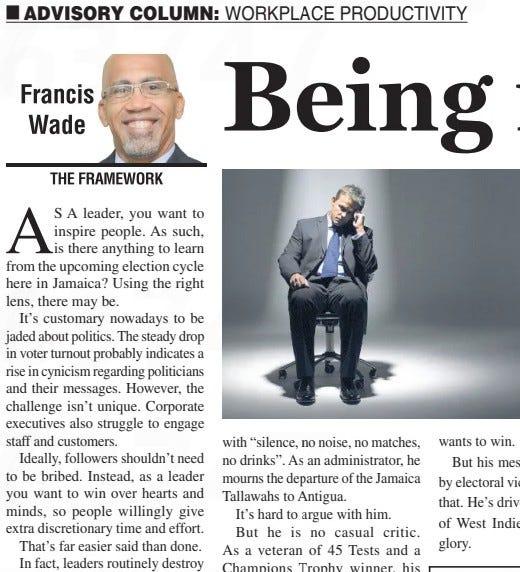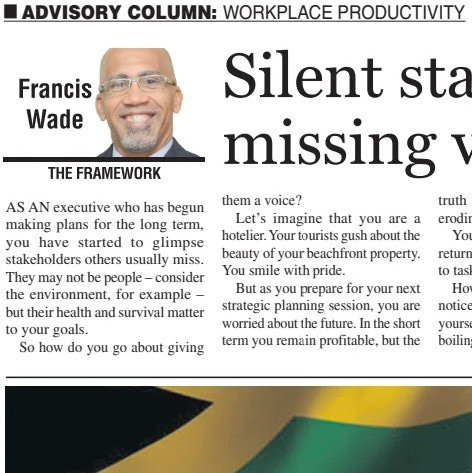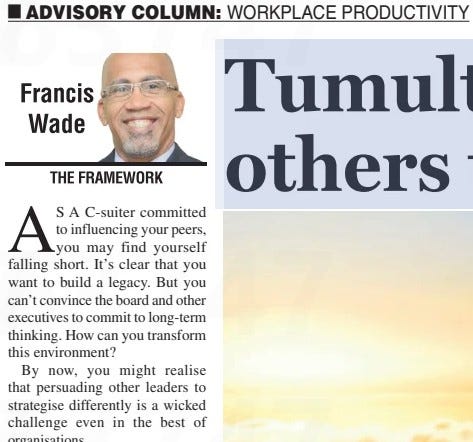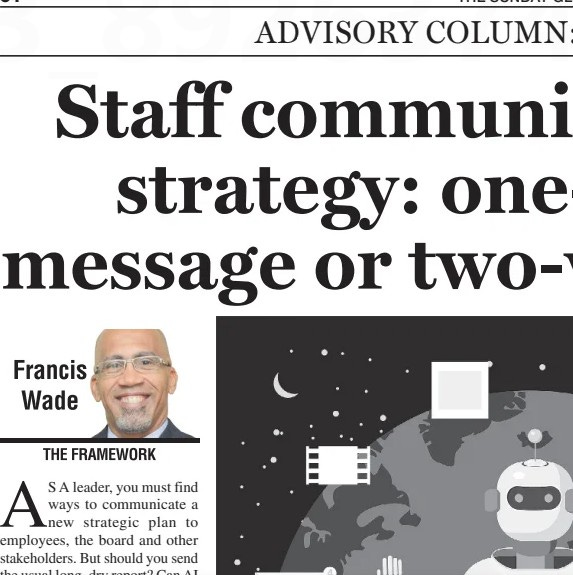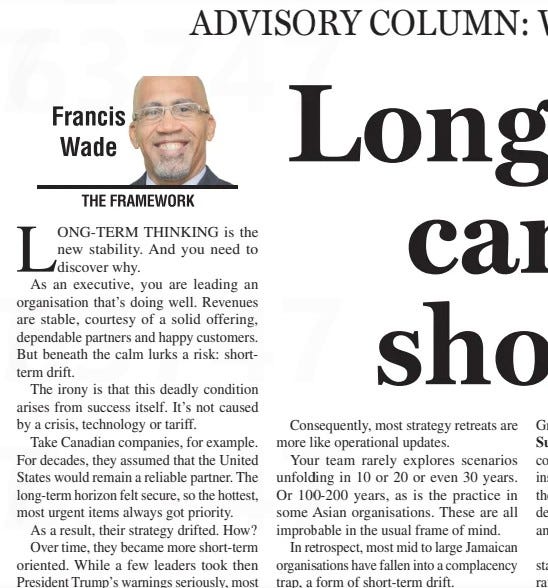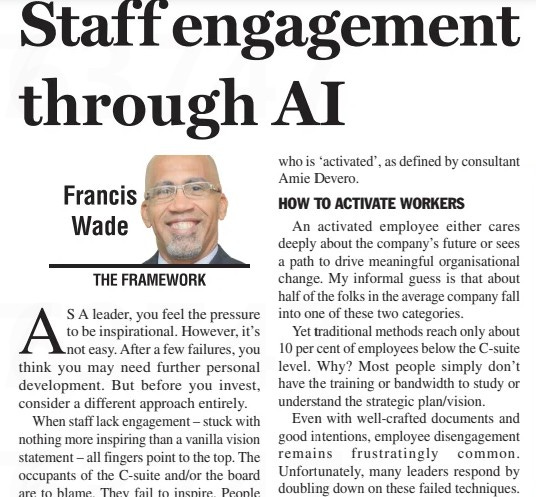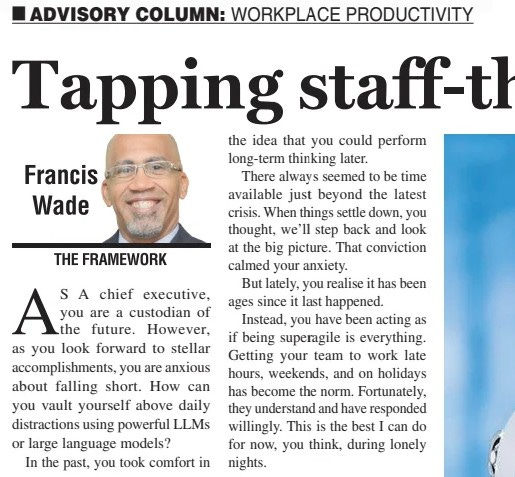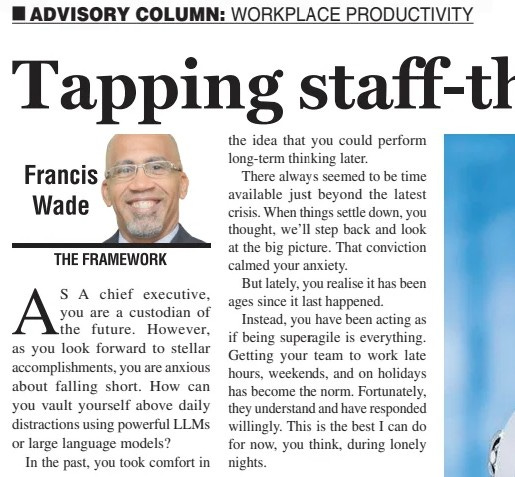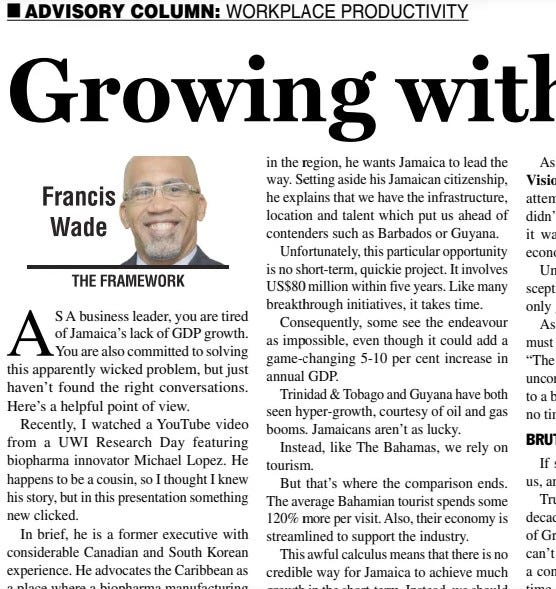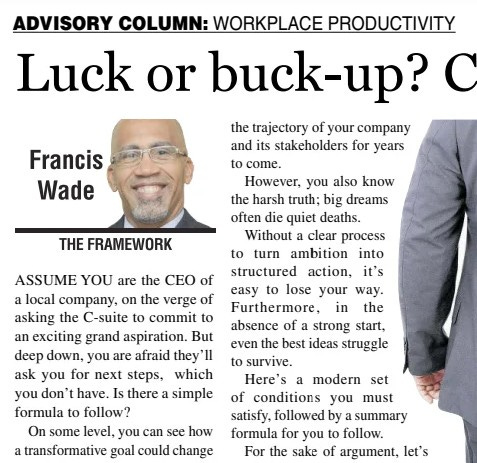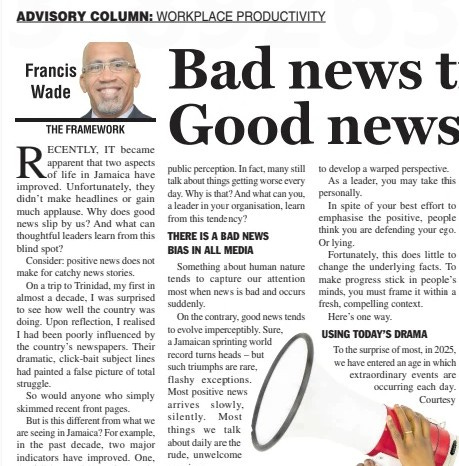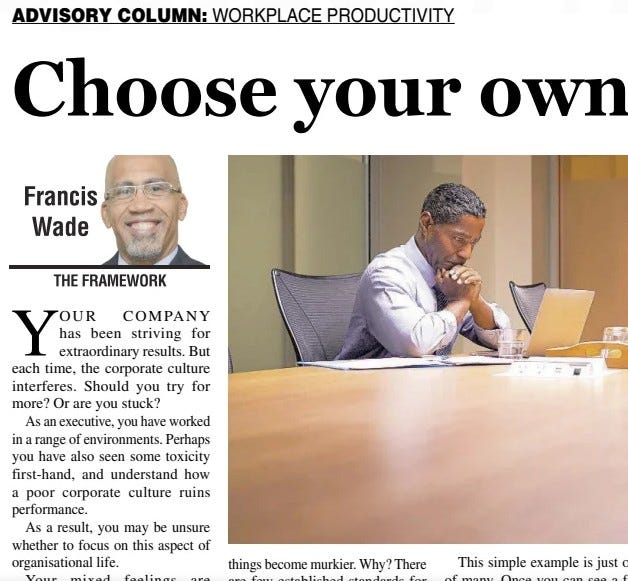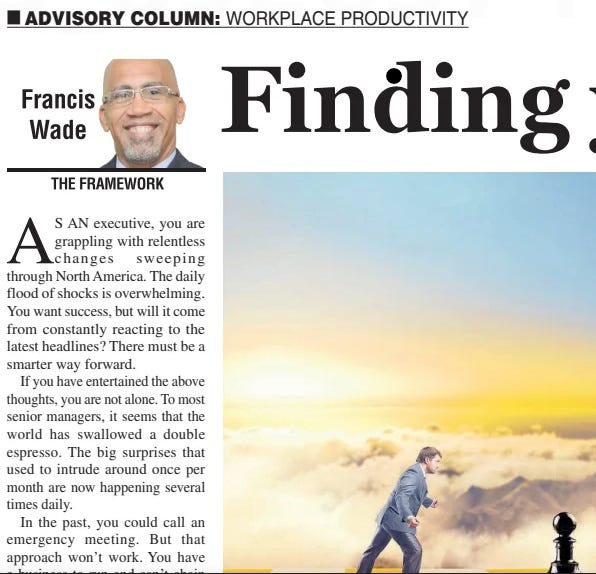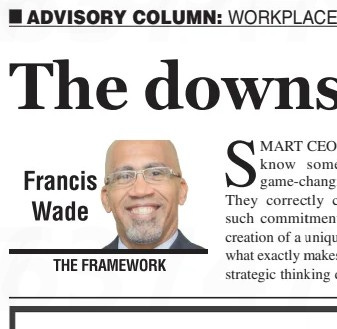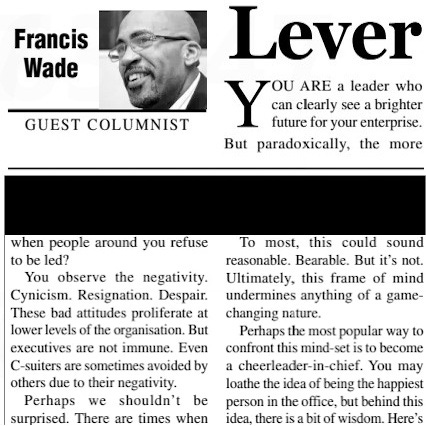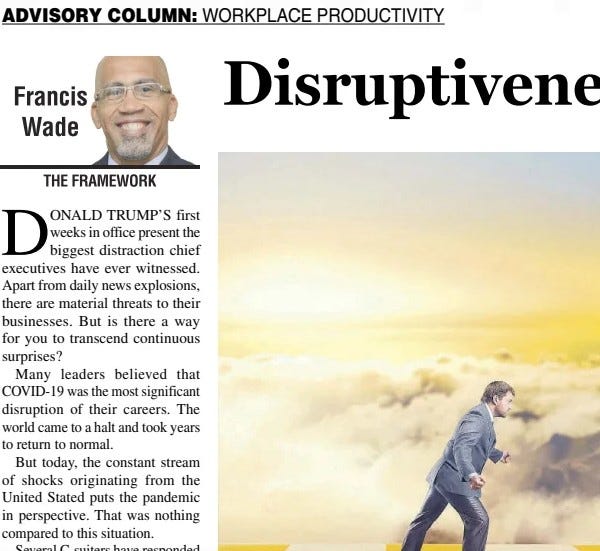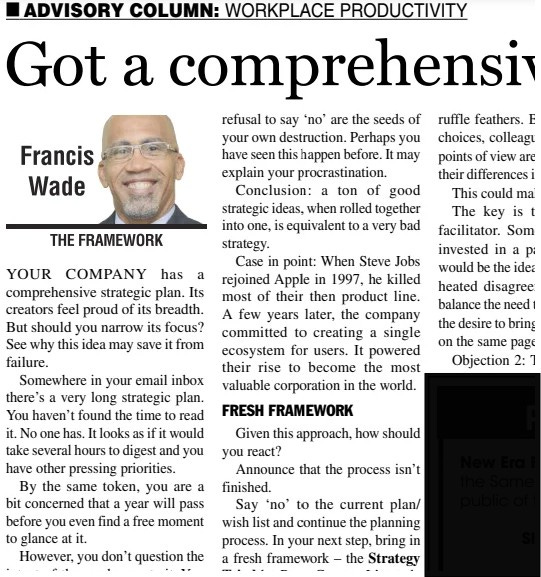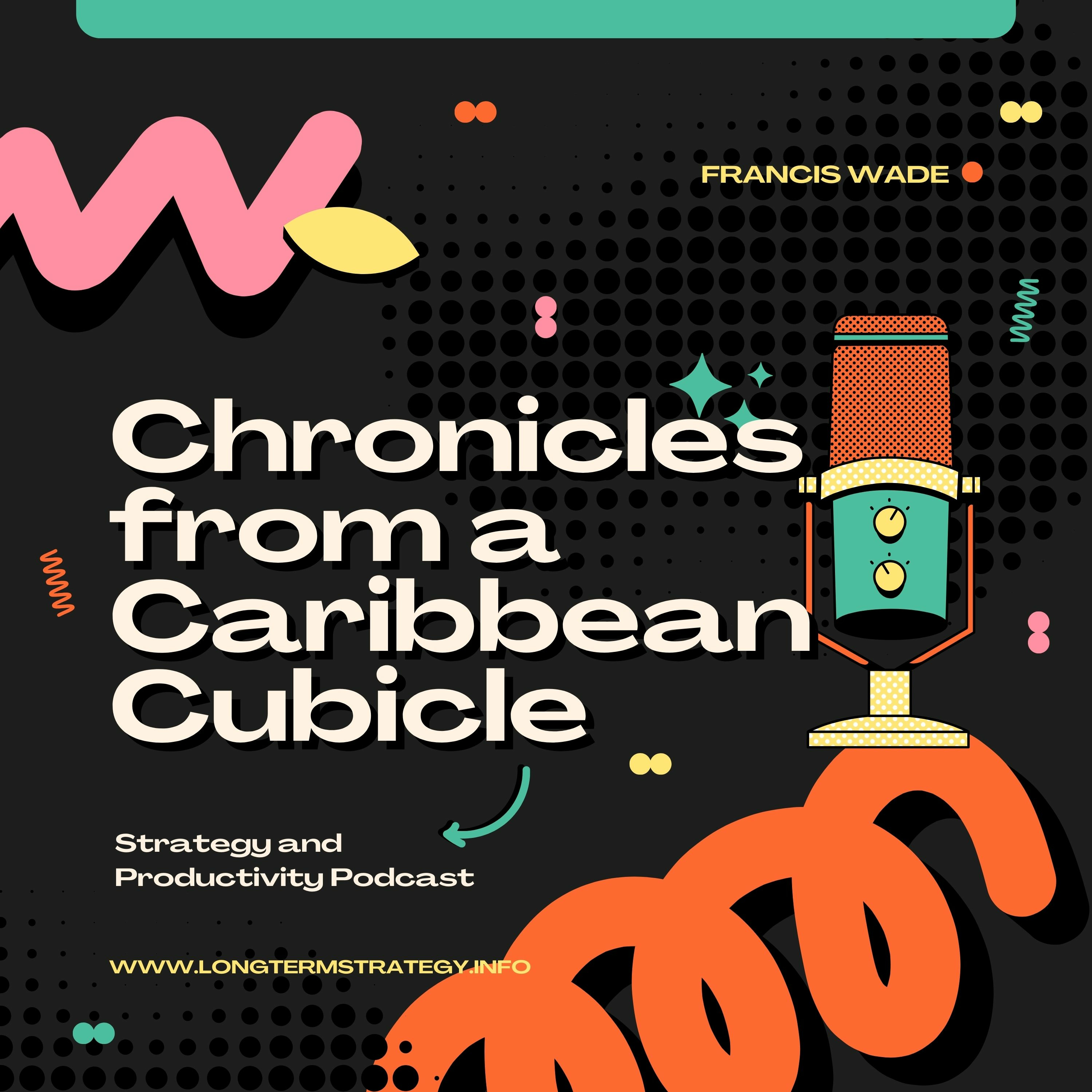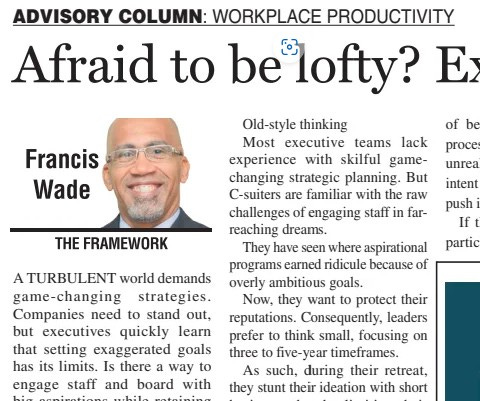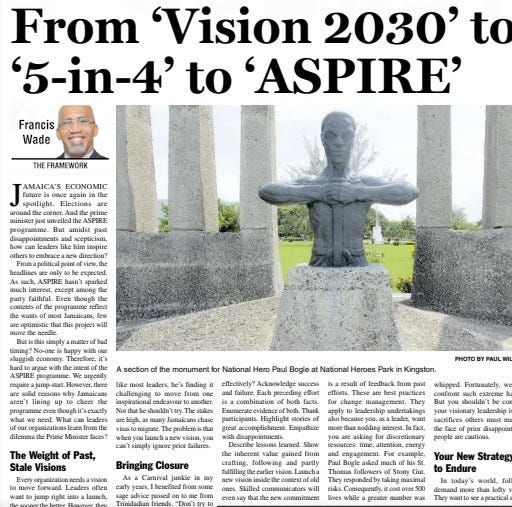Inspiration in Leadership | Anchor Your Message in a Compelling Future
Description
“Inspiration in Leadership | Anchor Your Message in a Compelling Future”
As a leader—whether in politics or business—you want to inspire people. You want them to care, commit, and go above and beyond. But earning this level of engagement is difficult. In fact, it’s one of the most elusive challenges in leadership.
Inspiration, after all, isn’t automatic. It doesn’t come from holding a title or issuing commands. It’s something that must be carefully cultivated, often against the backdrop of public skepticism. That’s one reason why political campaigns, like Jamaica’s upcoming election cycle, can offer unexpected leadership lessons—if viewed through the right lens.
Today, many are disenchanted with politics. Voter turnout in Jamaica has declined steadily, echoing global trends that point to growing cynicism about leadership, institutions, and the future. And this problem isn’t confined to government. In the corporate world, executives also struggle to mobilize teams and customers around a vision—especially in environments marked by uncertainty, competition, and fatigue.
Ideally, leaders shouldn’t need to bribe, pressure, or manipulate people into action. Instead, they aim to win over hearts and minds so that others willingly contribute their discretionary time, energy, and creativity. That’s what genuine inspiration looks like—but it’s easier said than done.
Leaders, even well-intentioned ones, often destroy followership without realizing it. They lose focus, fail to articulate a compelling vision, or make careless remarks that erode trust. You’ve likely seen this happen—where someone in authority squanders goodwill with a single tone-deaf comment or decision.
Amidst this leadership crisis, I recently came across a video from Wavell Hinds, the former West Indies cricketer and now a political aspirant with Jamaica’s PNP. His short Facebook message, filmed at a deserted Sabina Park, offers a masterclass in communicating a purpose-driven future—one that transcends personal ambition or partisan gain.
Grounded in Painful Truths
Hinds begins with brutal honesty: West Indies cricket has declined. Once the pride of the Caribbean, it now commands little interest or passion. For many young Jamaicans, he argues, the game no longer holds any allure because they never grew up seeing it at its best.
Standing in an empty Sabina Park, once a symbol of cricketing greatness, he laments: “There’s silence, no noise, no matches, no drinks.” He speaks not just as a politician, but as someone who lived the dream—having represented the West Indies in 45 Test matches and winning a Champions Trophy.
His message is credible precisely because it’s personal. Cricket, he says, was a vehicle for his childhood ambitions. Now, he mourns what appears to be its slow death in the region’s consciousness.
Avoiding Cynicism and Cheap Shots
Yet despite the raw emotion, Hinds avoids the kind of toxic finger-pointing that dominates many political messages. Yes, he questions the current government’s commitment, criticizing superficial gestures like ribbon cuttings and photo ops. But his tone isn’t bitter. He doesn’t vilify.
“Where is the action once the lights and cameras are off?” he asks. The question lands—not because it attacks—but because it invites reflection.
This is instructive. Too often, leaders believe they must attack rivals in order to stand out. But in both politics and business, overemphasizing competition can alienate your audience. Customers don’t care who your competitors are. Employees don’t necessarily rally behind a “we beat them” mentality. And voters? They grow weary of petty battles.
The Power of a Shared Future
What people do care about is the future—and whether a leader has a credible, inclusive path to get there.
Hinds doesn’t merely lament the past or criticize the present. He paints a vision of what could be: a resurgence of West Indies cricket that unites generations and rekindles national pride. It’s not about winning the next match or the next election. It’s about anchoring today’s actions in a future worth striving toward.
For corporate leaders, this is an important lesson. It’s tempting to focus narrowly on market share, quarterly results, or outperforming the competition. But those goals rarely ignite passion. Instead, leaders must craft “probable futures”—like “Sustainable Manufacturing 2040” or “AI for Human Flourishing”—that spark hope and demand innovation.
People don’t follow leaders because they outperform the competition. They follow those who offer a bigger vision—one that includes them, stretches their imagination, and makes them feel part of something meaningful.
Become an Ambassador from the Future
Effective leaders speak and act as if they’ve already visited the future—and are now returning to guide us toward it. They describe what they’ve seen in vivid, practical terms. They acknowledge the obstacles, yes—but they also lay out a clear path forward.
This kind of visionary leadership is difficult. It can be lonely. But it’s also the most fulfilling and impactful kind of work.
So ask yourself: what future are you inviting others to help create? Are you giving them something worth committing to—not just because it benefits your organization, but because it matters to the wider world?
The takeaway is clear: whether you’re in the boardroom or on the campaign trail, being inspiring is hard. But when your message is grounded in truth and tied to a compelling, collective future, people will follow—not because they must, but because they choose to.
This is a public episode. If you'd like to discuss this with other subscribers or get access to bonus episodes, visit longtermstrategy.substack.com/subscribe

